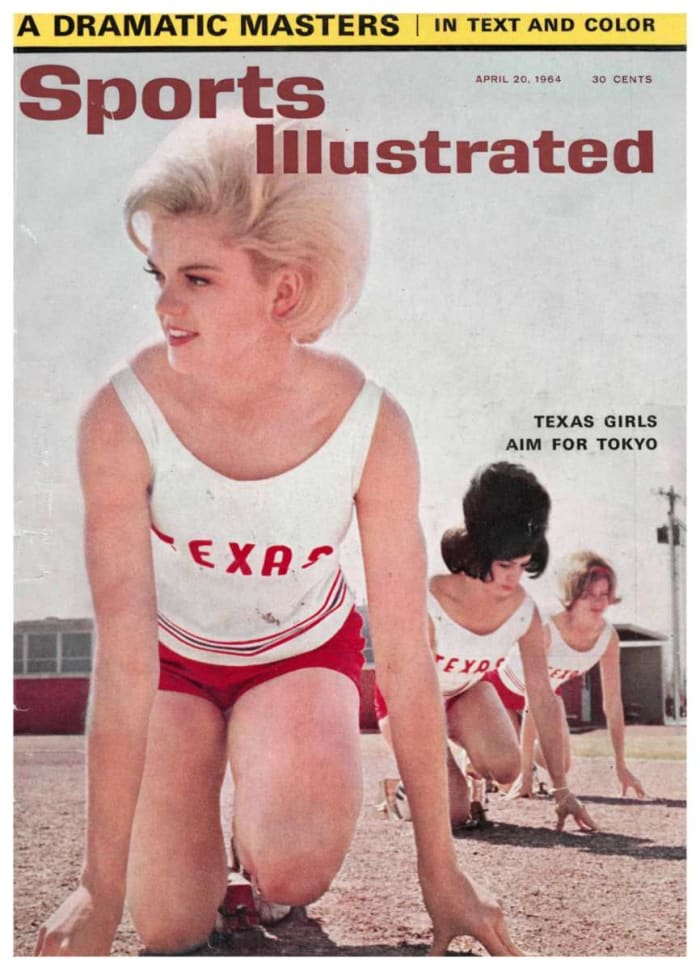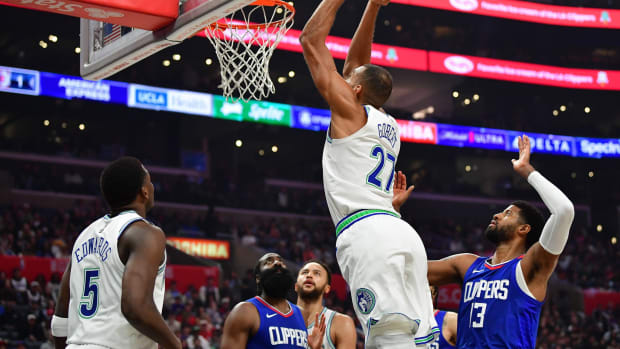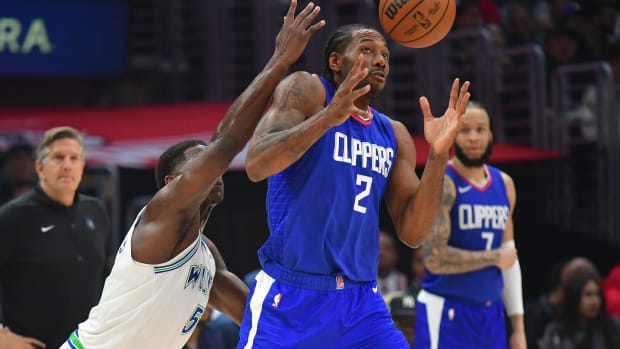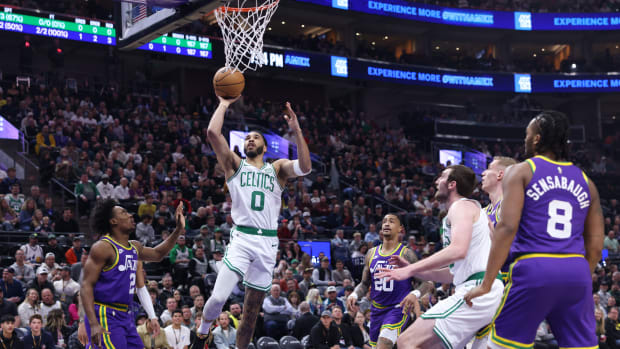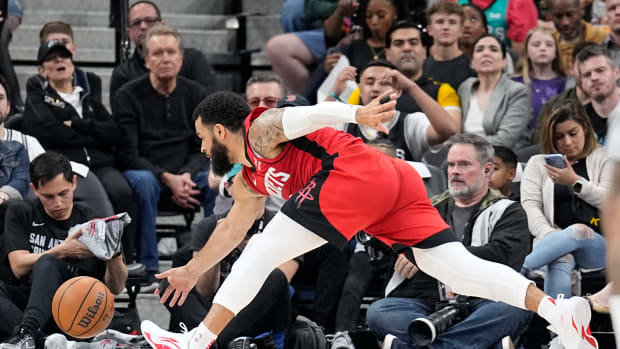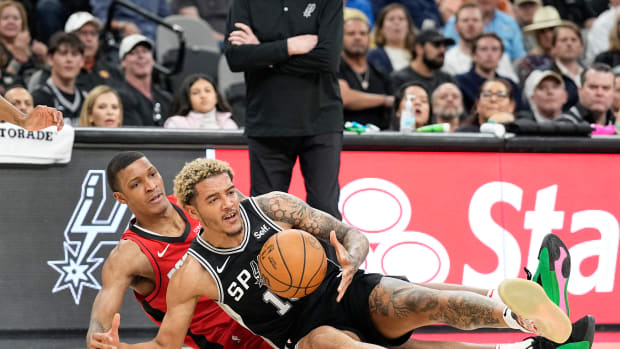SI:AM | How Booker’s Injury Could Change the NBA Playoffs
Good morning, I’m Dan Gartland. I’m hoping Devin Booker’s injury isn’t too serious.
If you’re reading this on SI.com, you can sign up to get this free newsletter in your inbox each weekday at SI.com/newsletters.
The NBA’s best team could be without its best player
During the first half of last night’s Game 2 between the Suns and Pelicans, it was easy to start envisioning Phoenix’s return to the Finals. Devin Booker was on fire during the first two quarters, scoring 31 points on 12-of-18 shooting.
But midway through the third quarter, Booker grabbed at the back of his leg while trying to chase down New Orleans’s Jaxson Hayes. He was taken back to the locker room and ruled out for the rest of the night with what the Suns are calling “right hamstring tightness.”
With Booker out, the Pelicans left the Suns in the dust, outscoring them 69–53 in the second half en route to a 125–114 upset victory. Brandon Ingram was the star of the game, leading all scorers with 37 points (26 in the second half) and adding 11 rebounds and nine assists.
The series is now tied 1–1 as it shifts to New Orleans, and the focus will be on Booker’s status. The Suns are deep enough that they should still be able to win the series without their top scorer, but last night’s game proved the Pelicans are no pushover.
The team didn’t provide any update on the injury, and it would be silly to speculate about the severity of it. (The good news, if there is any, is the injury is not to the same hamstring Booker strained earlier this season.) Still, any injury to a championship contender’s top player at this time of year is not ideal and the sight of Booker in warmup clothes on the bench in the fourth quarter has to have Suns fans nervous.
Phoenix coach Monty Williams did not discuss Booker’s injury after the game but promised to have an update today.
The best of Sports Illustrated
Colin Kaepernick’s comeback tour has kicked into high gear in recent weeks, and Alex Prewitt goes behind the scenes in today’s Daily Cover.
Michael Pina breaks down what the Celtics are doing to make Kevin Durant’s life difficult. … This week’s Sports Illustrated Weekly is a fun one, with Rohan Nadkarni getting the scoop on Jimmy Butler’s coffee habit. … Kevin Hanson has his final ranking of the top 262 players in the NFL draft.
Around the Sports World
Jimmy Butler set a playoff career high with 45 points in the Heat’s Game 2 win over the Hawks. … Wimbledon has banned Russian and Belarusian players from this year’s tournament. … Jerry West’s legal team has requested an apology from HBO over his portrayal in the series Winning Time. … Kareem Abdul-Jabbar also ripped the series in a written piece. … The Padres revealed what their uniforms will look like once teams are allowed to start wearing advertising patches next season, and they’re hideous. … Kyrie Irving was fined $50,000 for giving Boston fans the finger.
The top five...
… most unbelievable things I saw last night in sports:
5. Yankees prospect Wellington Diaz’s nasty slider
4. Ángel Hernández calling an automatic ball-four on Yusei Kikuchi for licking his fingers
3. All the empty seats at the Oakland Coliseum, where the A’s announced an official attendance of 3,748, their smallest nonpandemic crowd since 1980
2. Devin Booker fist-bumping a baby after a play
1. Braves Triple A outfielder Justin Dean’s stunning throw from deep right field to nail a runner at third
SIQ
On this day in 1986, Michael Jordan set the NBA single-game playoff scoring record with 63 points in a double-overtime loss to the Celtics. Whose record did he break?
Yesterday’s SIQ: Which school did Joe Mauer commit to play quarterback for before he gave up football to focus on baseball?
Answer: Florida State. Mauer turned down offers from Minnesota, Arizona and Miami to sign with the Seminoles but gave up football after his hometown Twins picked him first in the 2001 MLB draft. Mauer went to the same high school—Cretin-Derham Hall in St. Paul—as Florida State Heisman trophy winner Chris Weinke, who also played pro baseball.
At 6'4", 205 pounds, Mauer was the top-ranked football recruit in the nation as a senior. He threw for 3,022 yards and 41 touchdowns while completing 61.8% of his passes in his final season. He did all that despite football being a distant second priority behind baseball.
“I’m telling you right now, he didn’t pick up a football until mid-August,” Tony Leseman, Mauer’s friend and teammate in both sports, told Fox Sports in 2015. “When we played summer baseball and we had an afternoon game that got done early, maybe, less than a handful of times he’d say, ‘Hey, after we’re done, you want to stick around 10 or 15 minutes and throw the ball?’”
From the Vault: April 20, 1964
I wrote on Monday about a group of women athletes who, before the passage of Title IX went to extreme lengths to train seriously for their sports. This story, published four years after the one about the swimmers at the University of Houston that I mentioned a couple of days ago, is a portrait of a team whose coach did not take women’s sports seriously at all.
In the early 1960s, Margaret Ellison ran the Texas Track Club, an Abilene-based team of girls and young women with their sights set on the ’64 Olympics in Tokyo. But Ellison was more concerned with appearances. The extremely nonaerodynamic hairstyles you see on the cover above weren’t just for the photo shoot. The runners actually competed with their hair petrified by loads of hairspray. The eye-catching hairdos and revealing (for the time) uniforms were part of Ellison’s plan to drum up interest in her team.
“I’m trying to change the stereotyped image of the track girl,” Ellison told SI’s Gilbert Rogin. “Every year we have a good-looking team and good-looking uniforms—none of those bags. I prefer pretty girls. I insist that they wear makeup. We all go to the beauty shop before each meet, so we can get beautiful and get our minds off the meet. When we ran in Albuquerque this January, I could have killed myself. They have the worst beauty operators in the world in Albuquerque. After I came out of one shop, I went right into another one where this man made my hair worse. I had to go back to the motel and do it myself. We have different hairdos for each meet. We straighten a lot of girls’ hair, but of course you can’t make it too bouffant when it’s natural-curly.”
Ellison also had some very antiquated opinions about women’s interest in sports and whether they were cut out to be coaches.
“I’ve found that girls lose interest in track, don’t keep coming out regularly, if you don’t make a game of it,” Ellison said. “That’s why we have different uniforms every year and go in for makeup and hairdos. It’s just like giving candy to kids—you have to keep them entertained. And you’ve got to get them young. But if you ever get that little blue ribbon into their hands ....
“I do think, however, that a man can coach girls better than a woman, for the simple reason that girls will listen to a man, they have more confidence in him, and a woman likes to show off for a man. But most men are too busy to understand women. They just say, put on a white blouse and shorts and come out. For instance, on my workout schedules, I always put down ‘No talking.’ Girls are always yakking, ‘I went out with so-and-so.’ I don't want to hear them talking personal problems. I keep saying girls are different. You can’t train them like boys, they get emotionally upset. You have to know their moods and recognize what these moods mean.”
In 2015, Runner’s World caught up with the women featured on the cover. Janis Rinehart, pictured in the foreground of Neil Barr’s photograph, caught the eye of a runner at Lubbock Christian College named Jerry Brown. After seeing her on the cover of the magazine, he decided he needed to meet her. They were married in 1966 and were still together when the Runner’s World piece was published.
Rinehart remains proud of the cover, displaying a signed original copy in her and Brown’s home in San Antonio, but Rogin told Runner’s World of his story, “It was all just a stunt. It wasn't a track story.”
Check out more of SI’s archives and historic images at vault.si.com.






























